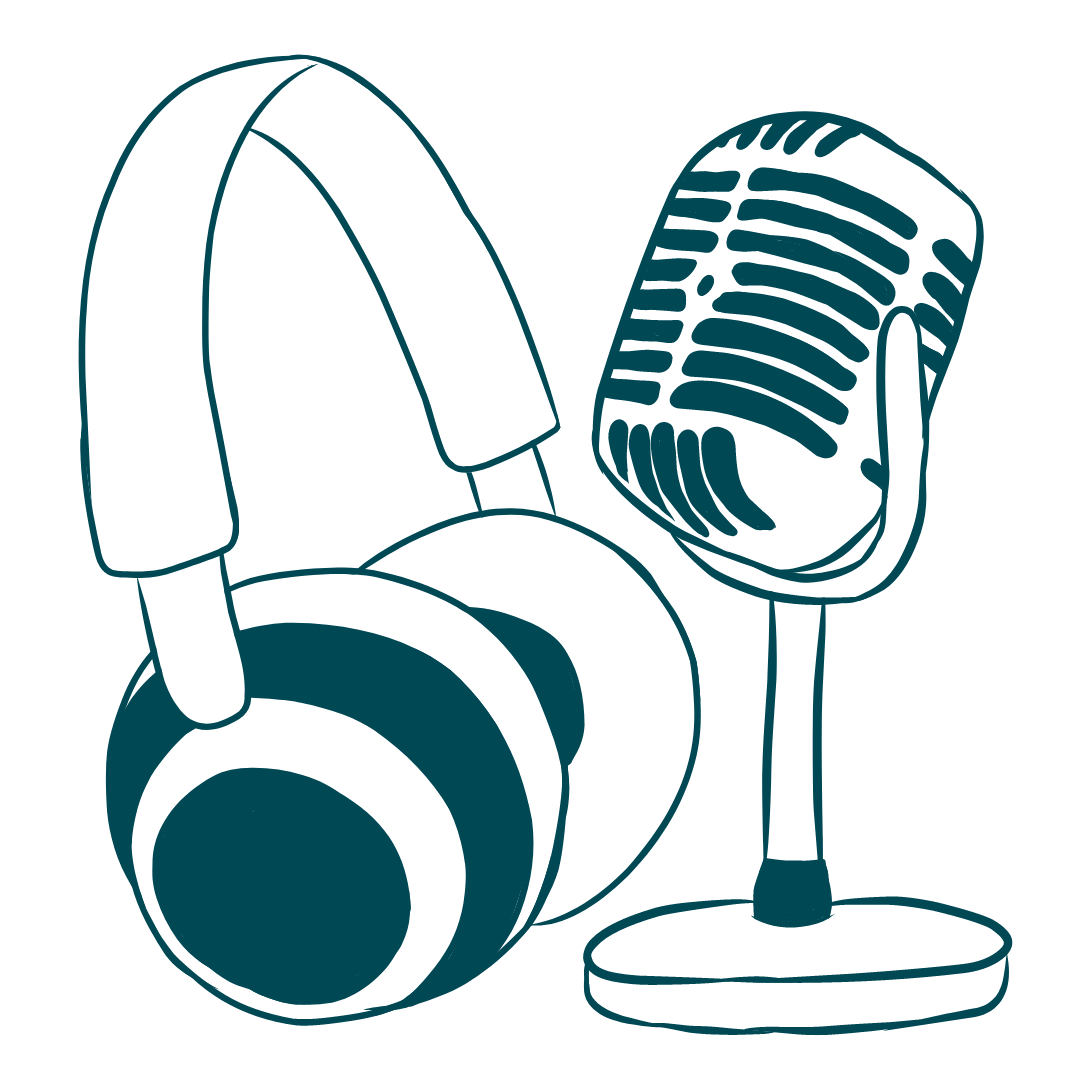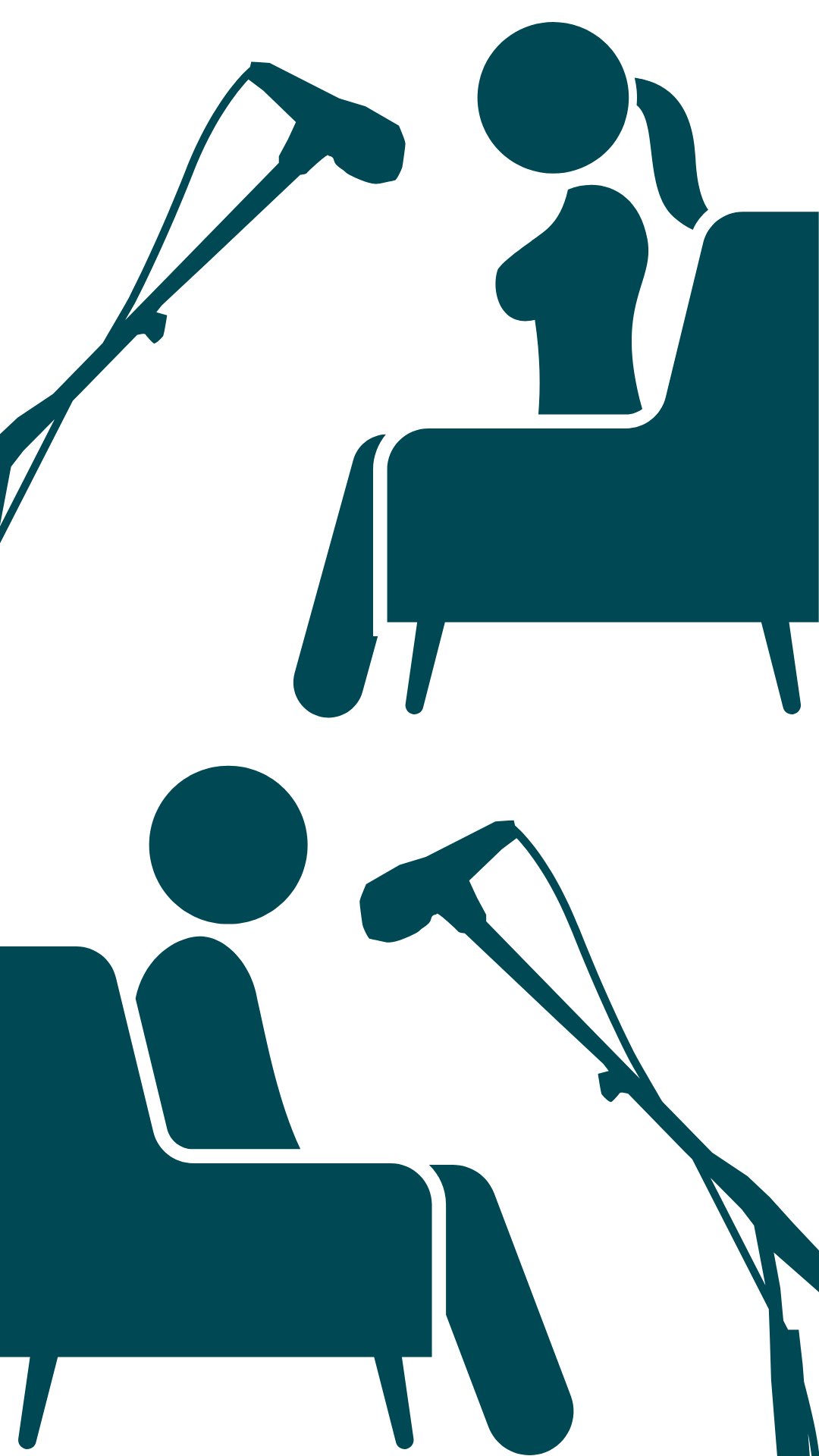Choose the Right Podcast Equipment for You
Having the right equipment can significantly enhance the quality of your podcast and, in turn, attract more listeners.
And the best part is, you don't need much gear to record a podcast. Podcasting does not have to be expensive, and you might even have some of what you need to get started already.
In this post, we'll cover the best microphones, headphones, and a sample one and two-person recording setup!


What podcast microphone is best?
Microphones come in a wide range of price categories, configurations, designs, and other features. For some microphones, you’ll also need an amplifier or interface.
Sounds complicated? It doesn't have to be! These days, you can get a quality microphone with a simple USB connection for under a hundred bucks and little to no extra equipment.
Why USB podcast mics are best for beginners
For beginners, USB microphones are often considered the top choice due to their ease of use and affordability.
Here are some additional reasons why USB microphones are often the best choice for beginner podcasters:
- Plug and play. A USB mic is a plug-and-play device, meaning you can just plug it into your computer's USB port and start recording. There is no need for additional equipment such as audio interfaces or mixers, making it a convenient option for beginners.
- Don't require an audio interface to use. Unlike traditional microphones that require an XLR cable to connect to an audio interface, USB microphones have built-in analog-to-digital converters. This feature allows the microphone to directly capture and convert analog sound waves into digital audio signals, resulting in better sound quality.
- Affordability. USB microphones are affordable, making it a great option for beginners who may have a limited budget. You can find good-quality USB microphones for as low as $50, which is significantly cheaper than other microphones.
While there are certainly more expensive and higher-end options available, USB mics provide excellent sound quality for a fraction of the cost, making them a great choice for those who are just starting out and may not have a large budget to work with.
Our top podcast microphone recommendations (USB & XLR)
Here are some of our top mic recommendations for podcasters just starting out.
Best budget-friendly option: Samson Q2U ($59.99)
This microphone just has it all. It is easy to use, user-friendly and versatile. The sound is full and rich, a stand comes with the mic, it can do both USB and XLR and it costs you just about 70-80 bucks. That is a pretty sweet deal for such a great piece of hardware.
Check this independent review to learn more about this great microphone:
Best high-end option: Shure SM7B ($399)
This premium XLR microphone has a warm, silky-smooth, and full sound. It isolates the speaker's voice very well from the environment, reducing noise and distortion. It is a very robust microphone that will last you for at least a decade.
The downsides? It's a little pricey, and being XLR requires a much more complex setup with additional hardware and stands. While the mic is $399, the full setup will cost you around $1000.
But if you have the budget and want to go premium, look no further.
Check out this Shure SM7B setup guide:
Other options: Mobile podcast microphones
Do you want to record flexibly while you’re on the move, perhaps because you travel a lot or do a lot of work on the road? If so, consider the following recommendations for mobile podcast equipment that takes up little space but still sounds good.
It’s hard to get them smaller than this. You can’t go wrong with the clip-on microphone (lapel microphone) from RODE. Once connected to a smartphone or tablet, you’re ready to go. Due to the small size, the sound isn’t quite as precise and rich as the above options, but it’s good enough for most podcasters.
This mic has built-in recording software, allowing you to record audio directly to the microphone without the need for additional external recording devices. It's convenient, portable, and effortlessly balances volume fluctuations.
With the premium microphone head from Beyerdynamic, it always sounds good even in rooms that aren’t well-suited for podcasting due to loud echoes, for example.
3 Types of podcast studio setups (+ the equipment needed for each)
Here are several recording studio setups–but this is just a blueprint: feel free to customize these setups and get the podcast gear that works best for you!
Solo podcaster setup
- USB Microphone (e.g., Samson Q2U)
- Closed-back headphones (Audio Technica M20x)
- Pop filter
- Desk stand or boom arm
- Recording/editing software (e.g., Audacity, GarageBand)
In-person co-hosts
- 2 USB Microphones or 2 XLR Microphones with an audio interface
- Closed-back headphones for each host
- Pop filters
- Desk stands or boom arms
- Recording/editing software (e.g., Audacity, GarageBand)
Remote Co-Hosts and Guest Interviews:
- USB microphone for each participant
- Closed-back headphones (earbuds for guests also work fine)
- Pop filters
- Recording/editing software (e.g., Zoom, SquadCast, Riverside.fm)
- Stable internet connection
Additional podcast equipment resources:

Well done, Part 3 is finished
Continue now to part 4: Brand Your Content: Find the perfect title, music, and artwork for your show
How To Start a Podcast: The Definitive Guide
- Part 1: Create a Captivating Podcast Concept
- Part 2: Make Your Editorial Calendar
- Part 3: Choose the Right Podcast Equipment for You
- Part 4: Brand Your Content: Find the perfect title, music, and artwork
- Part 5: Prepare the Perfect Podcast Recording Studio
- Part 6: Record Your First Episode: Scripting, style, and storytelling
- Part 7: Streamline Your Recording & Editing Workflow
- Part 8: Choose a Podcast Hosting Service: Tips for selection and setup
- Part 9: Maximize your Podcast Reach: Publish to Apple Podcasts, Spotify, Amazon, and other platforms
- Part 10: Learn Powerful Podcast Promotion Strategies
Start Your Podcast Today With Podigee
.png)
- Become the leading voice in your niche with your own podcast
- Get all the tools like podcast hosting and analytics that you need to start your podcast
- Publish your podcast on Spotify, Apple Podcasts, YouTube and pretty much everywhere